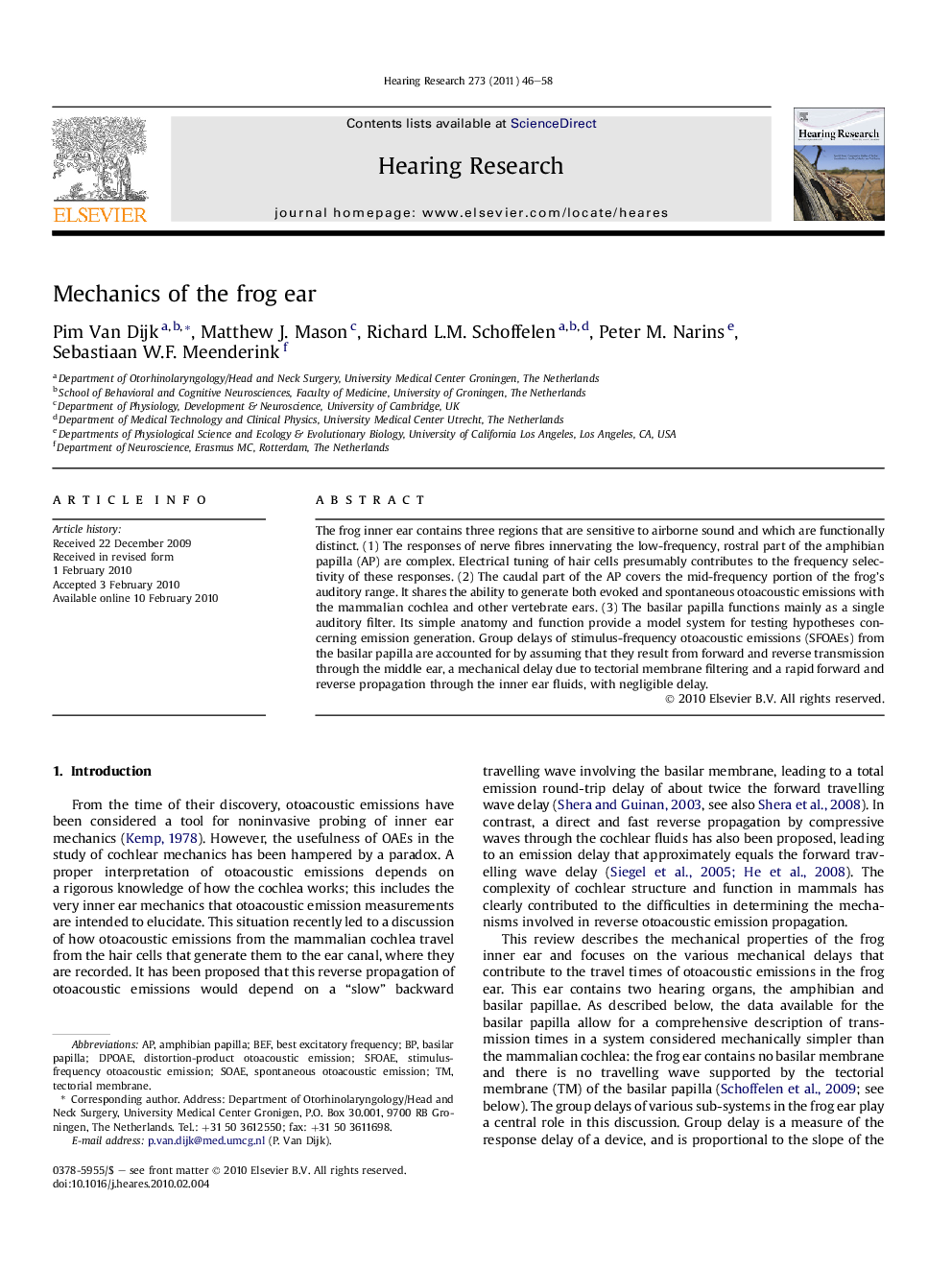| کد مقاله | کد نشریه | سال انتشار | مقاله انگلیسی | نسخه تمام متن |
|---|---|---|---|---|
| 4355480 | 1615627 | 2011 | 13 صفحه PDF | دانلود رایگان |

The frog inner ear contains three regions that are sensitive to airborne sound and which are functionally distinct. (1) The responses of nerve fibres innervating the low-frequency, rostral part of the amphibian papilla (AP) are complex. Electrical tuning of hair cells presumably contributes to the frequency selectivity of these responses. (2) The caudal part of the AP covers the mid-frequency portion of the frog’s auditory range. It shares the ability to generate both evoked and spontaneous otoacoustic emissions with the mammalian cochlea and other vertebrate ears. (3) The basilar papilla functions mainly as a single auditory filter. Its simple anatomy and function provide a model system for testing hypotheses concerning emission generation. Group delays of stimulus-frequency otoacoustic emissions (SFOAEs) from the basilar papilla are accounted for by assuming that they result from forward and reverse transmission through the middle ear, a mechanical delay due to tectorial membrane filtering and a rapid forward and reverse propagation through the inner ear fluids, with negligible delay.
Journal: Hearing Research - Volume 273, Issues 1–2, March 2011, Pages 46–58